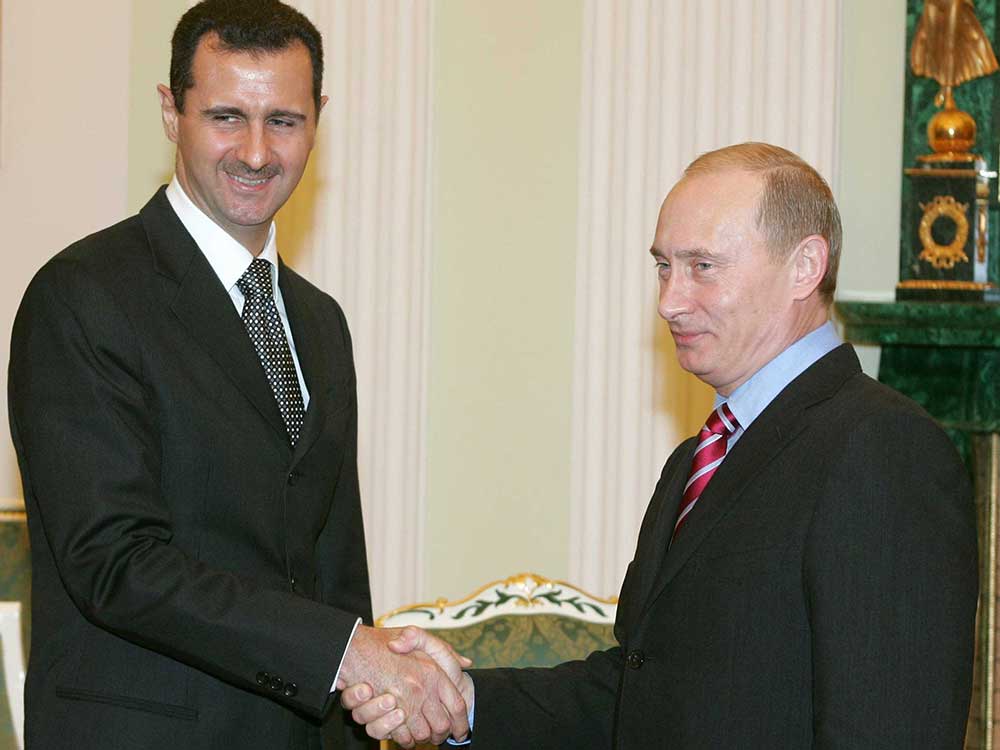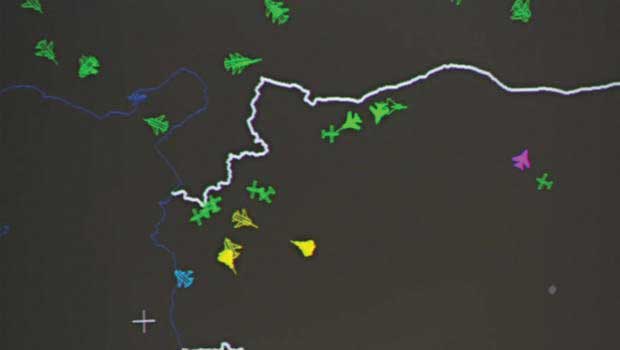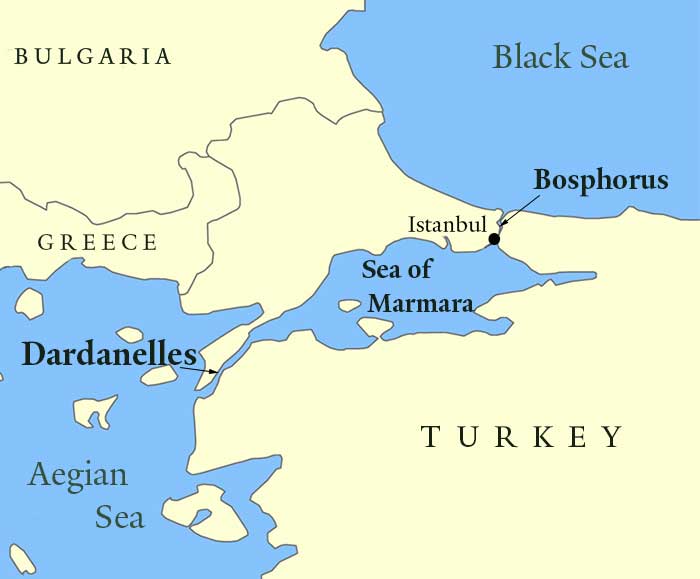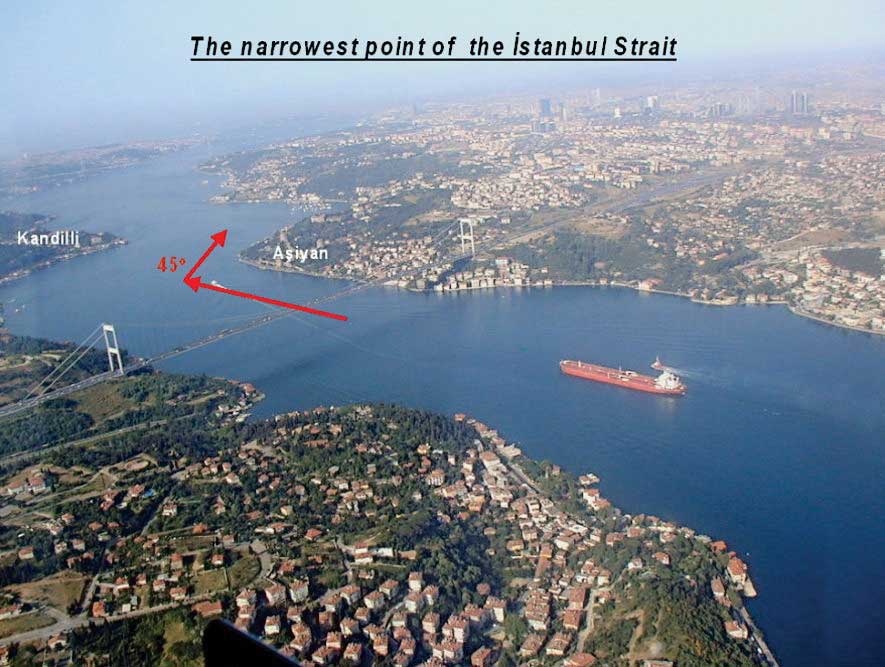Initially the boldness of the Russian intervention in Syria seemed to make Washington look weak and confused. However the Russians, beset by severe economic problems and already bogged down in a proxy war in the Ukraine, have taken a great risk by intervening in Syria. Going into Syria was relatively easy, getting out may be much harder and Russia is vulnerable to the repercussions of its military adventure on several fronts.
The initial Russian deployment in Syria is limited but will almost certainly grow, there are strong rumours that ground forces will be deployed, perhaps in the guise of ‘volunteers’ as in the Ukraine. In recent weeks Russia has expanded its airbase in Latakia Province, bringing in thirty-four jet fighters (mainly Su-30s and Su-24s) about two dozen attack and transport helicopters, a strategic airlifter, and drones and two airborne electronic monitoring planes (IL-20 ‘Coot’). Russia’s ships brought in advanced battlefield armoured vehicles and weapons. U.S. military officials say Moscow has deployed sophisticated anti-aircraft weaponry in the country as well as four BM-30 Smerch multiple-rocket-launching artillery systems. Several hundred additional troops were deployed as “advisers” to Assad’s militia, not only in Latakia and Tartous provinces on the Mediterranean, but also near the front-lines in Hama and Homs provinces.
These forces are being used to attack not ISIL, as is claimed, but are attacking groups affiliated or associated with the Free Syrian Army (FSA) The FSA has been armed and trained by U.S. Special Forces, many of whom remain in advisory positions on the ground in Syria. Putin’s objective is to not just support the faltering Assad regime but to build and lead a larger over-arching Shia bloc composed of the Damascus regime, Hezbollah and Iran as a counterpose to the Saudi led Sunni bloc. These two blocs are now fighting proxy wars across the middle east.
The success of the Russian strikes so far have been achieved by the dropping of ‘dumb’ bombs (those without a guidance system) and has included the use of ZAB 2.5M sub munitions of RBK-500 “cluster bombs’ (banned by international convention). So far their air assault task has been easy as they have faced no opposition in the air and the FSA ground to air missiles are currently too primitive to effectively counter the air strikes.
However, this is how their adventure in Afghanistan began.
Following the chaos caused by the ill-judged and reckless coup organised by the Afghan Communist Party the Soviets sent its troops across the Afghan border on Christmas day 1979, killed the incumbent president and installed a new communist government in Kabul. They rapidly occupied the area around the capital but their opposition, the mujahidin scattered to the rural areas. Initially the Soviets had overwhelming firepower and air supremacy. However, with the introduction of “Red-eye” and “Stinger” missiles and modern equipment the mujahidin were able to shoot down Soviet helicopters and to destroy Soviet tanks. These were largely supplied by the U.S. in Operation Cyclone (“Charlie Wilson’s War”). The mujahidin began a war of attrition with the occupying Soviet troops. This was very expensive in men, material and propaganda. It was bleeding the Soviet military dry and winning no friends around the world. Equally as important it distressed the parents and families of these soldiers who were suffering and dying in Afghanistan, creating a major gulf between them and the Andropov, Chernenko and Gorbachev Governments. Since the Soviet war in Afghanistan Man Portable Air Defence Systems (MANPADS) have developed significantly since the Afghan war and now include a range of laser-guided missiles capable of bringing down most of the Russian rotary wing and some fixed wing aircraft using relatively unsophisticated delivery systems. These are now being supplied to some groups of FSA insurgents. Saudi Arabia has also stepped up its supply of these to its allies in Syria.
One immediate impact of the Russian air strikes has been to act as a catalyst to unite, at least for the time being, the disparate anti-Assad forces in pursuit of their common enemies – Assad’s forces and ISIL. A group of 41 rebel brigades, including some non-ISIL Islamist battalions, issued an appeal for help Monday from their Arab allies to counter the Russian intervention, which they called “a clear invasion of the country.” The signatories included the Salafist Ahrar al-Sham rebel group as well as more moderate units that have received help in the form of weapons and training provided by the United States and its allies, such as Suqour al-Jabal and Tajamu al-Izza, which are among the groups targeted by the Russian airstrikes. Russia claims it wants to run a short campaign and to end operations in three months or so, however if its airstrikes act as a catalyst for both unity amongst non-ISIL insurgent groups and precipitate increased flows of weaponry then a quick exit may prove elusive.
Russia, Syria and Turkey
Turkey has made a very strong protest to Russia over the incursion into Turkish air apace of Russian aircraft. According to NATO, the violations occurred “on 3 October and 4 October by Russian Air Force SU-30 and SU-24 aircraft in the Hatay region. The aircraft in question entered Turkish airspace despite Turkish authorities’ clear, timely and repeated warnings. In accordance with NATO practice, Turkish fighter aircraft responded to these incursions by closing to identify the intruder, after which the Russian planes departed Turkish airspace.”
The Russian Su-30S maintained a radar lock on one or both the Turkish F-16s for a full 5 minutes and 40 seconds. According the Russians, the violation was due to a “navigation error”, even though the type of navigation systems carried by the Su-30 SM (a very modern fighter) is very sophisticated. It also doesn’t explain why the Russian plane locked on to the Turkish F-16s for such a long time. Based on available evidence it appears the Russian incursions were deliberate and may have been aimed at intimidating NATO into ceding control of increased air space to the Russians.
This action by the Russian pilots may have very serious consequences. Turkey is part of NATO and for a Russian aircraft to lock on to a Turkish jet inside Turkish airspace is a serious violation of NATO air space. In 2014, a Syrian Mi-17 was shot down by a TuAF F-16 for s similar incursion, while in 2013 it was the turn of a Syrian Mig-23. Turkey immediately took up the matter of the Russian breach of its airspace with the NATO command and leadership structures. On October 5 NATO held an emergency meeting in Brussels of ambassadors from its 28 member states to respond to what Secretary-General Jens Stoltenberg called “unacceptable violations of Turkish airspace” after a Russian jet crossed its frontier with Syria on the October 3rd. Turkish President Tayyip Erdoğan, whose country is one of Assad’s fiercest foes in the region, said Russia’s defence of the Syrian leader was a “grave mistake”. “Assad has committed state terrorism, and unfortunately you find Russia and Iran defending (him),” Erdoğan was quoted by Hurriyet as saying. Turkey has now stated that it has the right to shoot down any Russian planes in its airspace.
Inside Syria Russian planes are now operating in very close proximity to US and allied planes. In recent days the Russian planes have closed to within 20 miles of US planes , at which point the American pilots could visually identify them on their targeting cameras. Lt. Gen. Charles Brown, commander of the American air campaign, said the Russians have come even closer than that to his unmanned drones. “The closest has been within a handful of miles of our remotely piloted aircraft,” said Brown. “But to our manned aircraft they’ve not been closer than about 20 miles.”
This radar map (source) shows how close the two airforces are: the yellow aircraft are Russian, the green are American.
Despite the Russians, Gen. Brown said he plans to increase strikes against ISIS sanctuaries in Syria. Many of those missions will be flown by the crews of B-1 bombers who now must avoid run-ins with the Russians.
The Bosporus and the Straits of the Dardanelles: Black Sea choke points
Although Turkey has asserted its right to shoot down Russian planes invading its airspace and has emphasised that an invasion of NATO airspace by Russian fighters will engage all of NATO in Turkey’s defence, a far more devastating response by Turkey is available. Turkey controls the strategic pinch points of the Bosporus and the Straits of the Dardanelles and thus can effectively deny the Russian Black Sea fleet in the Crimea access to the open ocean and block maritime resupply routes to its Syrian forces.
The issue of access to the Black Sea was settled at the Montreux Convention Regarding the Control of the Straits when it was signed on 29 July 1936. It is a recognised international agreement; registered in the League of Nations Treaty Series on 11 December 1936. It regulates the transit of naval warships. The Convention gives Turkey full control over the Straits and guarantees the free passage of civilian vessels in peacetime. However, it also restricts the passage of naval ships not belonging to Black Sea states. The terms of the convention have been the source of controversy over the years, especially over the efforts of the Soviet Navy trying to get access to the Mediterranean through the Straits.
Without the permission of Turkey Russian warships are not allowed to pass freely through the Straits. The Convention provided that Turkey was authorised to close the Straits to all foreign warships in wartime or when it was threatened by aggression; additionally, it was authorised to refuse transit from merchant ships belonging to countries at war with Turkey. Non-Black Sea state warships in the Straits must be less than 15,000 tons. No more than nine non-Black Sea state warships, with a total aggregate tonnage of no more than 30,000 tons, may pass at any one time, and they are permitted to stay in the Black Sea for no longer than twenty-one days.
When the Soviet Union made its pact with Hitler in 1939 it tried to use this agreement to force Turkey to abandon its control of the Straits. The Turks refused. In 1946 the Soviet Union demanded that the Turks relinquish sole authority over the Straits. This Turkish Straits crisis backfired on the Soviets when Turkey renounced its neutrality and accepted Truman’s offer of military aid, shortly after in Turkey and Greece joined NATO in 1952. The U.S. worked with the Turks to set up air bases and signals bases on the Soviet border. Turkish troops fought alongside other NATO members in the Korean War. The Soviets continued to object but made no progress. In the 1960s the U.S. naval vessels were given regular, unheeded, access to the Black Sea. In April 1982 the Convention was amended to allow the Turkish authorities to close the Straits at its discretion.
Despite efforts by the Soviet Union and its successor Russia to change the rules of access through the Straits and to apply the United Nations Convention of the Laws of the Sea of freedom of movement, Turkey has refused to ratify that treaty and the Montreux rules still apply. Turkey has the right to close off the Straits to foreign shipping whenever it so wishes, especially if there is a state of conflict between Russia and Turkey. If the straits are closed the Russians cannot supply shiploads of weapons or equipment to Tartous the Syrian port pivotal to the Russian supply lines to its forces in Syria. Without access to Tartous Russia have to use aircraft for all deliveries and will be denied permission to overfly NATO states in the region. The area around the Black Sea is full of U.S. Aegis missiles, capable of intercepting and destroying anything the Russians might attempt to use to breach Turkish airspace. In addition US Navy ships patrol the Black Sea.
Possible Saudi counters to the Russian military intervention
Saudi supports a range of Sunni fighters in Syria, some of whom have just been bombed by Russian planes. Syrian rebels and their Saudi and Gulf Arab backers are dug in for the long haul and may well have the willingness and capacity to pay a much higher price for victory than Russia can at the end of a precarious supply chain. Assad controls about 25% of Syria and 60 percent of the population, about 45 percent of the country is under Islamic State militants and the remaining 30% is controlled by Kurds, various rebels and non-ISIL jihadists. The Saudis are already positioned to equip its Syrian proxies to fight against Russian forces. In December 2013, the U.S. Defense Security Cooperation Agency, approved a Saudi request to purchase nearly 14,000 TOW anti-tank missiles, an ideal weapon for Syrian rebels needing a cheap and effective counter to the Russian-backed Assad regime’s tanks. The missiles began arriving in 2015, and deliveries will continue for another for three years thereafter. Following the Russian intervention the US may be willing to pass sophisticated anti-aircraft systems, via the Saudis, to the Syrian revels who are under bombardment from the Russian planes.
More than 50 Saudi clerics called on Syrian rebels and Muslim countries on Monday to support a jihad against Syria’s government and its allies.
“This is a real war on Sunnis, their countries and their identities,” said the statement. It urged the rebels to join a “jihad against the enemy of God and your enemy and Muslims will back you every way they can.” More than 40 insurgent groups on Monday called “Russia’s military aggression in Syria a flagrant occupation” that is a “legitimate target.” Their statement said: “The coming war is one that aims to liberate our land from two occupying forces: Iranian and Russian.”
But Saudi Arabia has another, and perhaps more powerful weapon at its disposal: punishing Russia economically by keeping oil prices low. Back in 1985-1986, the Saudis massively expanded oil production to regain market share, an action that drove prices down by more than 60% and they did not recover until the Iraqi invasion of Kuwait five years later. The prolonged period of low oil prices shattered the Soviet Union’s brittle, oil-dependent economy, hastening its collapse. In the current situation, oil prices have also fallen by roughly 60% and a recovery to the levels Russia needs to fund itself (to at least $70 per barrel) could take years.
Russia is highly vulnerable if the Saudis open the taps a bit more and further depress prices. Russian Deputy Energy Minister Alexei Teksler recently told journalists that if prices fall below $40/barrel, Russian oil production is likely to contract. Furthermore, the impact of low oil prices on Moscow’s coffers is not limited to crude oil: much of Gazprom’s gas exports to Europe and China are still priced on oil-linked formulas. See my recent piece on the central role that hydrocarbons play in the Russian political economy.
Moreover, the margins on Russian versus Saudi oil are very different. Despite a relative decline, Saudi Arabia is capable of producing additional supply with relatively little lead time. Saudi Arabia’s core fields produce oil for as little as US$ 4-5 per barrel. While the bulk of Russia’s Western Siberia fields, which account for the lion’s share of the country’s oil output, has production costs closer to $35 per barrel even accounting for the rouble’s devaluation. Additionally pipeline and maritime shipping likely adds another $10-15 per barrel to Russian oil costs. All this means that Russian margins on its oil is much smaller than Saudi margins, and it is very more more vulnerable in the short term to the shock of lower oil prices. In contrast Saudi Arabia likely has the productive and national financial resources to survive at least a year in a $30 per barrel environment (although even Saudi Arabia is vulnerable if low oil prices persist – see my article). In addition, the burgeoning U.S. production of shale oil will soon be opened for exports to the world as the Congress sheds the 1972 restrictions on the export of oil products meaning that the US can now directly influence the world price of oil and has every reason, both economically and politically, to push the price down. If the Saudi’s help maintain low oil prices, even it damages their own economy, it could destroy the Russian economy without firing a shot.
So Russia is risking a great deal in its Syrian adventure and may soon face the consequences. The US and NATO do not need to expand a military response to its folly in Syria, however tempting as there are other tools available like closing the Dardanelles and driving down the price of oil which would have more devastating and long-lasting results for the Russians.




